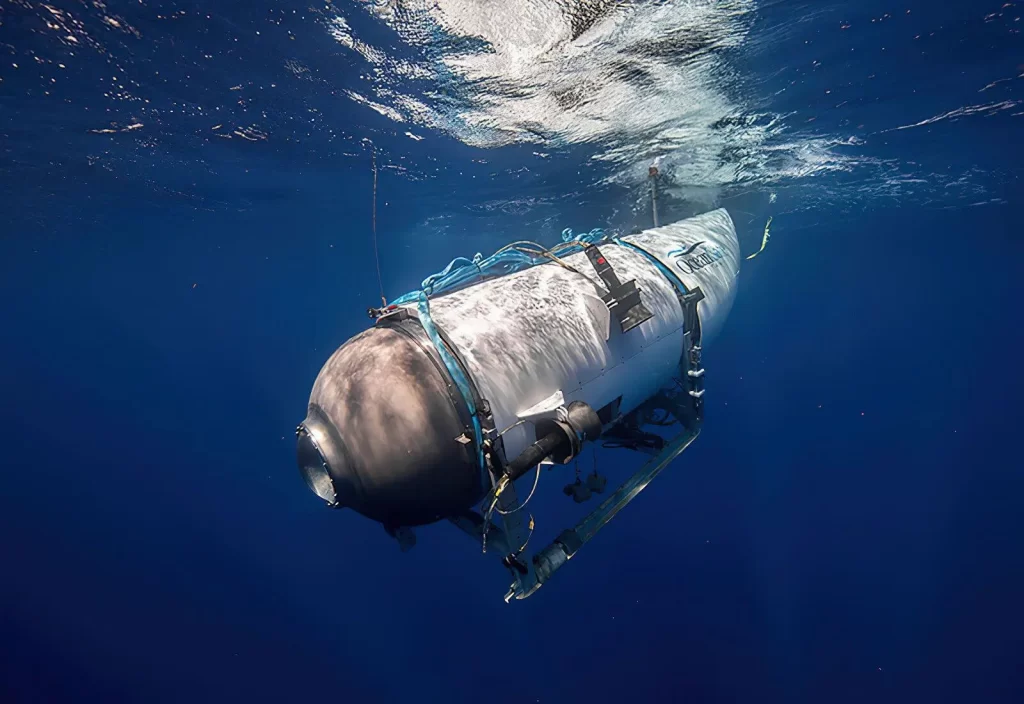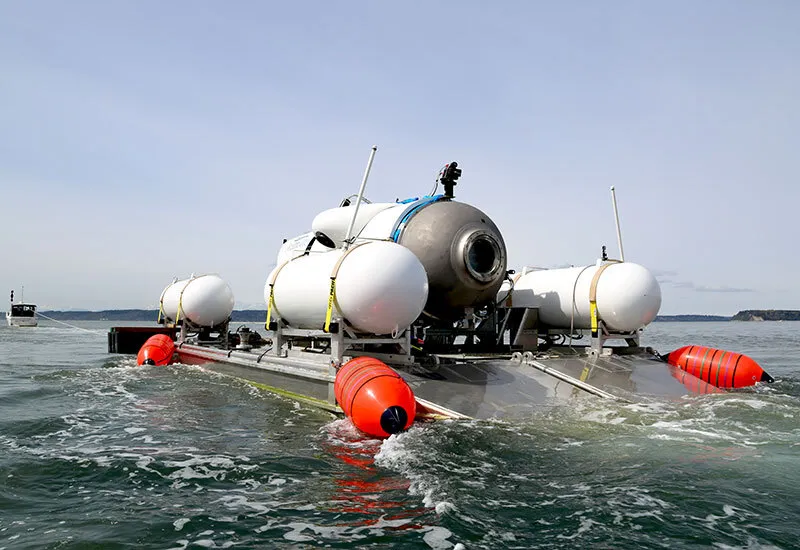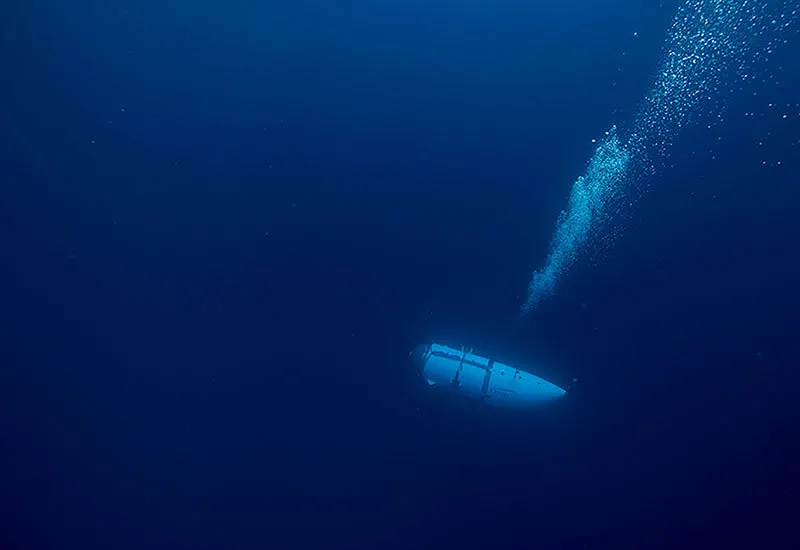In the realm where Maritime Archaeology and Marine Biology intersect, shipwrecks hold a special place, offering a glimpse into the past and a platform for scientific research. Such explorations have been ongoing for many years, including atlantic ocen.
Ocean Gate, a private company specializing in facilitating deep-sea expeditions, found itself at the center of this unique fusion of disciplines. Their latest venture involved the use of a small submarine named Titan, specifically designed for underwater exploration. Tragically, this cutting-edge submersible, carrying five individuals on a mission to observe the historic Titanic wreck, has vanished into the depths of the ocean.

Resting approximately 13,000 feet below the surface, nearly 400 miles off the coast of Newfoundland in the North Atlantic Ocean, the infamous Titanic became the focal point of the ill-fated expedition. The Titan submarine, measuring 22 feet in length, boasted a maximum capacity of five passengers, in addition to the pilot. Propelled by four electric thrusters driven by battery power, the submersible reached a top speed of 5.6 km per hour. Rather than a conventional control panel or steering wheel, a Logitech gaming controller from yesteryears served as the means to navigate the submarine, providing tourists with the freedom to observe the underwater world from any desired angle.

Inside the submarine, there was no control panel or seating arrangements; passengers were required to sit on the floor, akin to a compact minivan experience. The limited space only permitted seating for five individuals, with the toilet seat being the sole available option. The outer hull of the submarine featured a sturdy carbon fiber construction, with titanium hemispherical sections capable of withstanding the immense pressures at depths of 4,000 meters. Equipped with sonar, radar sensors, and exterior cameras, the Titan submersible offered both obstacle avoidance capabilities and illumination in the dark depths of the ocean. Additionally, a circular glass window, one foot in diameter, allowed passengers to gaze outside and admire the underwater vistas.

Ocean Gate opted against providing warranties for this particular submarine design. Their rationale stemmed from the belief that such warranties could not guarantee passenger safety within a submarine. Instead, the company regarded warranties as mere benchmarks for assessing submarine performance. Remarkably, the cost of embarking on a Titanic expedition within the Titan submarine amounted to $250,000. Ocean Gate estimated that each trip incurred expenses exceeding one million dollars. Furthermore, prospective passengers were obliged to sign an agreement that prominently mentioned the term “death” three times on its first page.
Titan has a capacity of 5 persons (1-Pilot and 4-crews)

Upon payment and contract signing, a ship would transport passengers and the submarine to the designated area in the North Atlantic Ocean where the Titanic met its tragic fate. Subsequently, passengers would board the submarine, and once all five were inside, the crew would seal the submarine from the outside using bolts. This ensured that those within the submarine could not exit until the surface crew opened the door upon completing the underwater journey.
Once sealed, the submarine’s internal oxygen supply would sustain the five occupants for a total of 96 hours. In the event of an emergency, communication with the surface ship could be established via sonar signals, utilizing transponder and transceiver technologies akin to SMS messaging. However, these messages only conveyed the submarine’s location and current status.
Furthermore, the submarine featured sensors that would alert the ship in case of any damage to the outer hull. If such damage occurred, the submarine would automatically rise to the surface. The design prioritized buoyancy, allowing for the release of excess weight and facilitating resurfacing procedures.
Tragically, one hour and 45 minutes after the Titan submarine’s launch on the 18th, no signals were received. Efforts by Ocean Gate operators to locate the submarine, utilizing sensors, proved fruitless. After six hours, authorities, including the Canadian Coast Guard, were notified, prompting search operations involving multiple organizations, including the US Navy and various non-governmental entities.

Search efforts encompassed an area exceeding 10,000 square miles of the ocean’s surface. As communication interruptions could potentially result in the submarine resurfacing, precautions were taken to maintain vigilance on the surface. Additionally, rescue teams deployed sonar buoys, hoping to detect any signals emitted by the submarine. However, due to the immense depth at which the submarine was presumed to be, the chances of successfully receiving signals, as opposed to encountering reflections from sonar or radar signals sent from the surface, remained exceptionally low. Compounding the challenge was the sheer number of shipwrecks, debris, and deceased organisms that populate the ocean depths.
The fate of the Titan submarine and its occupants hangs in the balance, leaving the maritime community and the world at large anxiously awaiting any news or developments in this harrowing ordeal.


